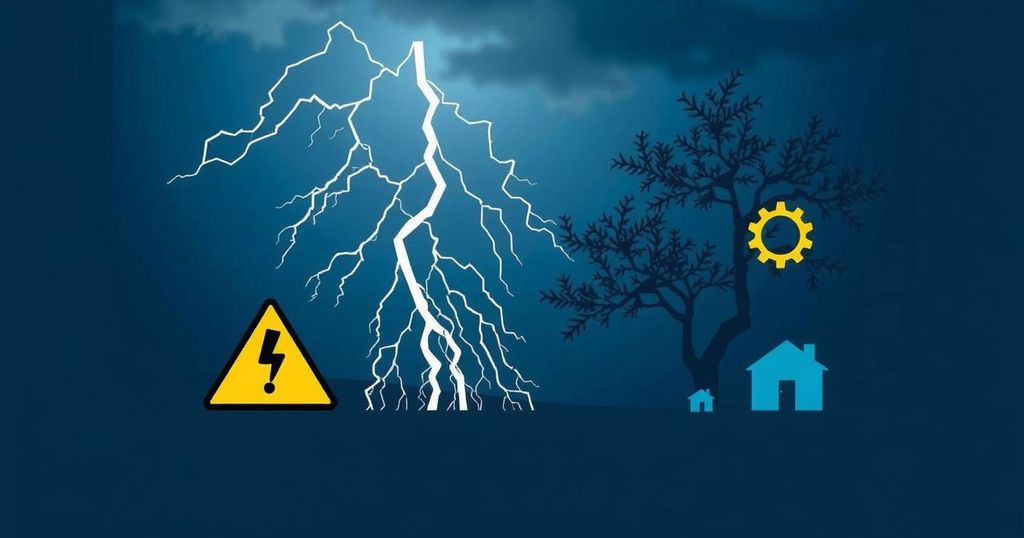Preparation is Key: Ensuring Family Safety During Hurricane Season

Hurricane Helene’s aftermath has raised concerns about the rising number of storms in the Atlantic. NOAA predicts up to 24 named storms, with seven potentially becoming major hurricanes. Experts, including oceanographer Isaac Ginis, warn about the implications of climate change on storm intensity. Proper preparation and awareness are essential for family safety during these storms, and resources such as ready.gov and the FEMA app are available to assist families in planning and response.
Following the devastation inflicted by Hurricane Helene, which has significantly increased the death toll and damage reports in the south, the threat of additional storms continues to escalate. Presently, multiple storms are intensifying in the Atlantic Ocean, with concerns that such severe weather events may become more commonplace rather than rare occurrences. This hurricane season, the National Oceanic and Atmospheric Administration (NOAA) has predicted an alarming total of up to 24 named storms, with the potential for seven to escalate into major hurricanes. As of now, eight storms have already been named, and with two months remaining in the hurricane season, experts emphasize the urgency for families to prepare to safeguard themselves against further danger. Historically significant, Hurricane Beryl was recorded as the earliest category five hurricane in the Atlantic this past July. Climate change is recognized as a contributing factor to the rising ocean temperatures, which in turn increases the intensity of hurricanes. University of Rhode Island Oceanographer Isaac Ginis articulated, “Even if we stop emitting carbon dioxide today, it will take 10, 15 years for the climate to get back, back to normal.” This reality underscores the necessity for enhanced forecasting methods. Ginis elaborated on the impact of hurricane activity on ocean temperatures, stating, “The warmer ocean will lead to more intense hurricanes, but the hurricanes can cool the water underneath.” This cooling effect is essential for meteorologists in predicting hurricane wind speeds and strengths. Moreover, Ginis highlighted the dangers posed not only by major hurricanes but also by slower-moving, lower-category hurricanes that can unleash severe flooding, noting, “Six inches of water can knock down an adult or two feet of moving water can essentially sweep away a vehicle.” To ensure the safety of families during storms, it is advised to prepare ahead of time, remain at home during the storm, and stock adequate supplies for the aftermath. Ginis stressed that, “There is no reason and justification to die during the storm these days. They just need to heed the warning and listen to the forecasters.” The hurricane season persists until November 30th, making it imperative for families to implement precautionary measures. Individuals seeking guidance on storm preparedness are encouraged to visit http://www.ready.gov/ for comprehensive advice on safeguarding their homes and businesses. Additionally, downloading the FEMA app can provide personalized resources to empower families in the event of a natural disaster.
The article discusses the increasing frequency and intensity of hurricanes in light of climate change, particularly emphasizing the impacts of warm ocean temperatures on hurricane formation and strength. The context includes recent events, such as Hurricane Helene and Hurricane Beryl, along with data from NOAA forecasting. This scientific backdrop serves to educate the public about the risks associated with hurricanes and highlights the necessity of preparation and awareness in ensuring family safety during these tumultuous weather events.
In conclusion, the increasing severity and frequency of hurricanes necessitate proactive measures for family safety. The data from NOAA indicates a challenging hurricane season ahead, emphasizing the need for preparedness. As supported by experts such as Isaac Ginis, understanding the interplay between ocean temperatures and hurricane activity is vital for improving forecasting accuracy. Families are encouraged to take heed of forecasts, prepare adequately, and utilize available resources to mitigate the risks associated with severe storms. The guidance provided by federal websites and the FEMA app is instrumental in promoting safety during hurricane season.
Original Source: www.walb.com







